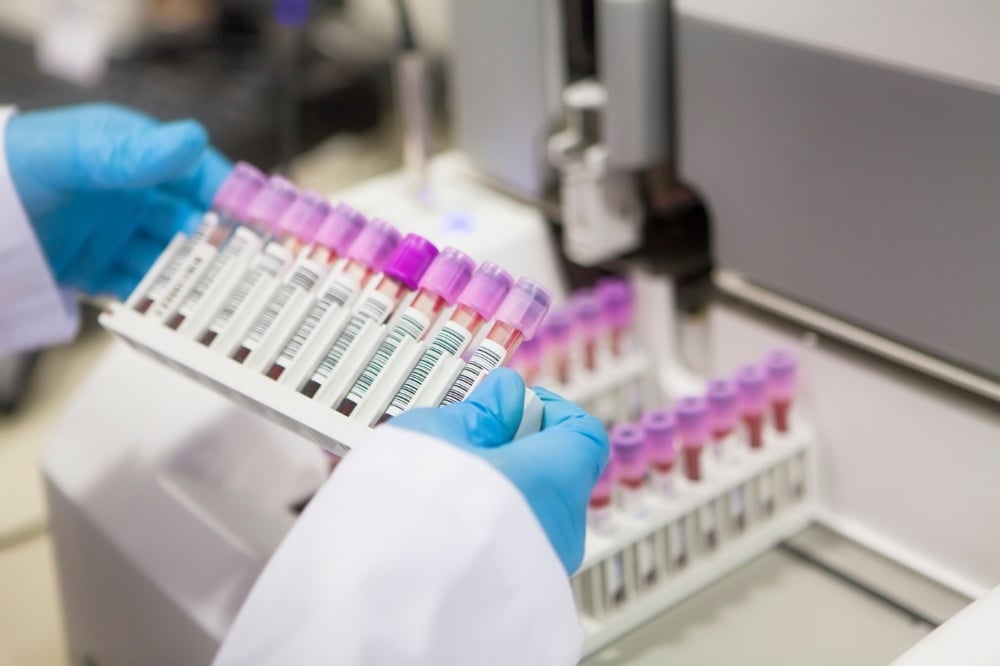Choose your Article Focus | NGS | Molecular & Serology
Lessons Learned: Pandemic Readiness & Reference Material Solutions
Category: COVID-19, SARS-CoV-2
Posted by
SeraCare Team on Feb 23, 2023 11:22:56 AM
In the early days of the COVID-19 pandemic, diagnostic testing was challenging. The tests were inaccurate, resulting in false results for both laboratory-developed and commercially-developed assays. This hampered efforts to identify cases quickly and contain the spread of the virus. The lack of reliable reference materials was a significant factor in these early diagnostic failures. Clinical testing labs were desperately searching for quality solutions that could help them independently verify that their assays were working properly. Learn how we successfully addressed these challenges:
0 Comments Click here to read/write comments
Molecular Diagnostics - Part 5: Analytical Sensitivity and Analytical Specificity Best Practices
Category: Molecular & Serology, Blog
Posted by
SeraCare Team on Feb 6, 2023 11:30:00 AM
The final article in our series about molecular diagnostics looks at best practices for analytical sensitivity and analytical specificity. Both are additional characteristics for laboratory-developed tests and modified FDA-cleared or approved tests.
0 Comments Click here to read/write comments
Molecular Diagnostics - Part 4: Reportable Range and Reference Interval Best Practices
Category: Molecular & Serology, Blog
Posted by
SeraCare Team on Dec 21, 2022 11:30:00 AM
Our series on molecular diagnostics continues with a look at best practices for two performance characteristics – reportable range and reference interval. These two characteristics need to be verified and documented for FDA-cleared or FDA-approved tests, laboratory-developed tests, and modified FDA-cleared or approved tests.
0 Comments Click here to read/write comments
Molecular Diagnostics - Part 3: Accuracy and Precision
Category: Molecular & Serology, Blog
Posted by
SeraCare Team on Oct 25, 2022 9:45:00 AM
We continue our series on molecular diagnostics. Previous articles covered: what you need to verify your molecular assay and the three major components of the verification process. FDA-cleared or FDA-approved tests have four performance characteristics that must be verified and documented: accuracy, precision, reportable range, and reference interval. Laboratory-developed tests and modified FDA-cleared or approved tests have two additional characteristics for verification (analytical sensitivity and analytical specificity). Now, it’s time to turn our attention to best practices for each of the performance characteristics. First up – accuracy and precision.
0 Comments Click here to read/write comments
Molecular Diagnostics - Part 2: Tackling the How
Category: Molecular & Serology, Blog
Posted by
SeraCare Team on Aug 30, 2022 11:48:55 AM
3 Important Stages of Assay Verification Molecular diagnostic tests are widely available in clinical microbiology laboratories now. It’s important to a lab’s success to understand the requirements before adding a new test. Protocols aren’t specified by regulators, so they vary by lab. The assay influences the controls and parameters, but the type of verification and its complexity are determined by lab directors. In a recent article, we took a look at what to verify. This is the first of several articles that will cover how to confirm a molecular assay performs as expected.
0 Comments Click here to read/write comments
How Low Can You Go? Performance at Lower Levels is Critical
Category: Molecular & Serology, Blog
Posted by
SeraCare Team on Jun 30, 2022 10:44:00 AM
Qualitative tests produce binary results, usually positive or negative. This presents a challenge for serological testing, since most of it is qualitative. Positive or negative results are determined in relation to a threshold value or cutoff. This cutoff, the line between positive and negative, is the medical decision point. It’s critical that this point is consistently acc urate at the lower limits of detection, where positive becomes negative. Without precision at the lower levels of positive results, laboratories may not feel confident in the results they present. Do they have a higher number of false positives or false negatives than they should?
0 Comments Click here to read/write comments
Molecular Diagnostics - Part 1: Know What to Verify
Category: Molecular & Serology, Blog
Posted by
SeraCare Team on Jun 28, 2022 2:52:33 PM
Adding a new molecular test to your lab? Make sure you understand the regulations that apply and the required performance characteristics. The following is the first in a series of articles on this topic that will include best practices. Before we dive into the how of verification for molecular diagnostic assays, let’s take a look at the what. Clinical laboratories performing an FDA-cleared or FDA-approved test must verify that the manufacturer’s performance characteristics can be met or exceeded Laboratories performing laboratory-developed tests (LDTs) and modified FDA-cleared or approved tests, must verify the same characteristics, plus determine analytical sensitivity and analytical specificity
0 Comments Click here to read/write comments
Looking for the Silver Lining in the Cloud of SARS-CoV-2 Emerging Variants
Category: Accuplex, SARS-CoV-2, Disease trends
Posted by
Catherine Huang, PhD on May 19, 2021 12:00:00 AM
As an RNA virus, SARS-CoV-2's genome replication is innately error-prone such that mutations are expected (1). Every now and then, a mutation will provide an adaptive advantage (such as increased transmissibility or infectivity to a human host), and will be positively selected for in the population. This process drives viral genome evolution, and gives rise to the rich diversity of viral strains and lineages that we see. However, for SARS-CoV-2, the unexpected emergence of such diversity since late 2020 has led to considerable anxiety around the progression of disease, and the efficacy of diagnostics and vaccines to control its spread.
0 Comments Click here to read/write comments
Key Strategies for Reducing Turnaround Time in Your Clinical Lab
Category: Molecular & Serology
Posted by
Eric Morreale, PhD on Mar 3, 2020 12:00:00 AM
They say good things come to those who wait, but when it comes to laboratory testing, faster is almost always better (assuming, of course, that accuracy is never compromised). The more rapidly that reportable results are generated, the quicker clinicians and patients can make decisions and embark on an effective treatment program. Furthermore, the more efficiently labs can run tests and generate results, the more they can accomplish. Faster turnaround times (TAT) can free up staff and resources for other activities, like growing the overall test menu. And let’s not forget the reputation factor. Labs want to be the reliable go-to for the clinicians they serve. They want to be trusted for their accuracy, professionalism, and speed.
0 Comments Click here to read/write comments
Is Your Lab Struggling with Burnout Like Other Labs? Here's How Reference Materials May Help.
Posted by
Eric Morreale, PhD on Feb 25, 2020 12:00:00 AM
A staffing crisis may be looming in the nation’s clinical testing laboratories, and many labs are already facing the problem. Labs are understaffed, while the demand for clinical testing is only going up. Turnover is high among lab technicians, as burnout and job dissatisfaction leads them to seek employment elsewhere or abandon their lab tech careers altogether. For lab directors, frequent turnover, diminished staffing, and employee unhappiness are vexing issues. A staff of motivated, qualified, and experienced technicians is one of the keys to generating the high volume of accurate, reportable results clinicians and healthcare organizations demand. How can you hold on to your best technicians while getting your newest team members up to the same skill level quickly? As we’ll see, an efficient and effective training program is essential. Well-trained technicians are more likely to stay in their jobs. New technicians perform at a higher level sooner when their labs prepare them for the variations they’ll encounter when working with real patient samples.
0 Comments Click here to read/write comments







.png)



